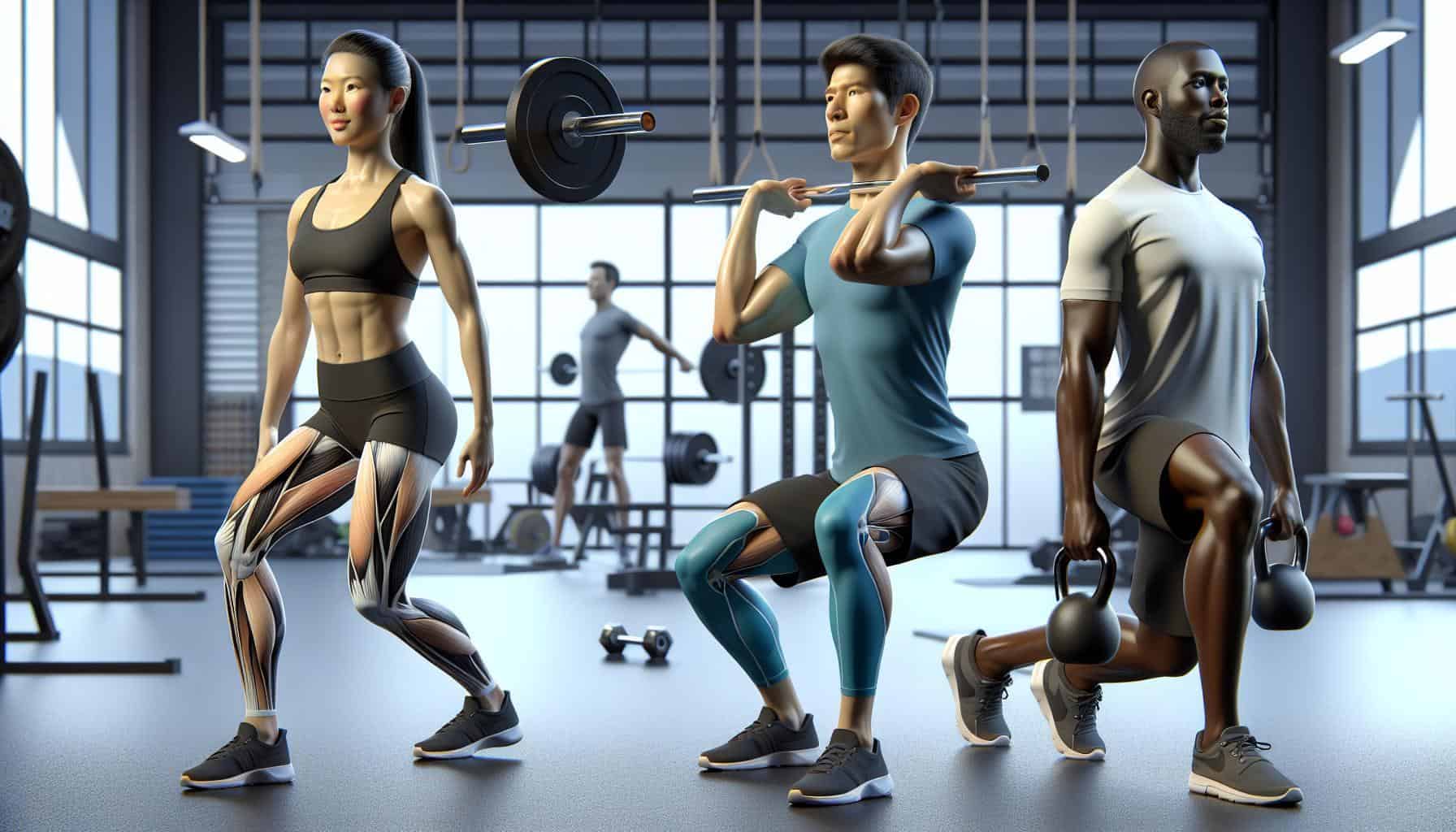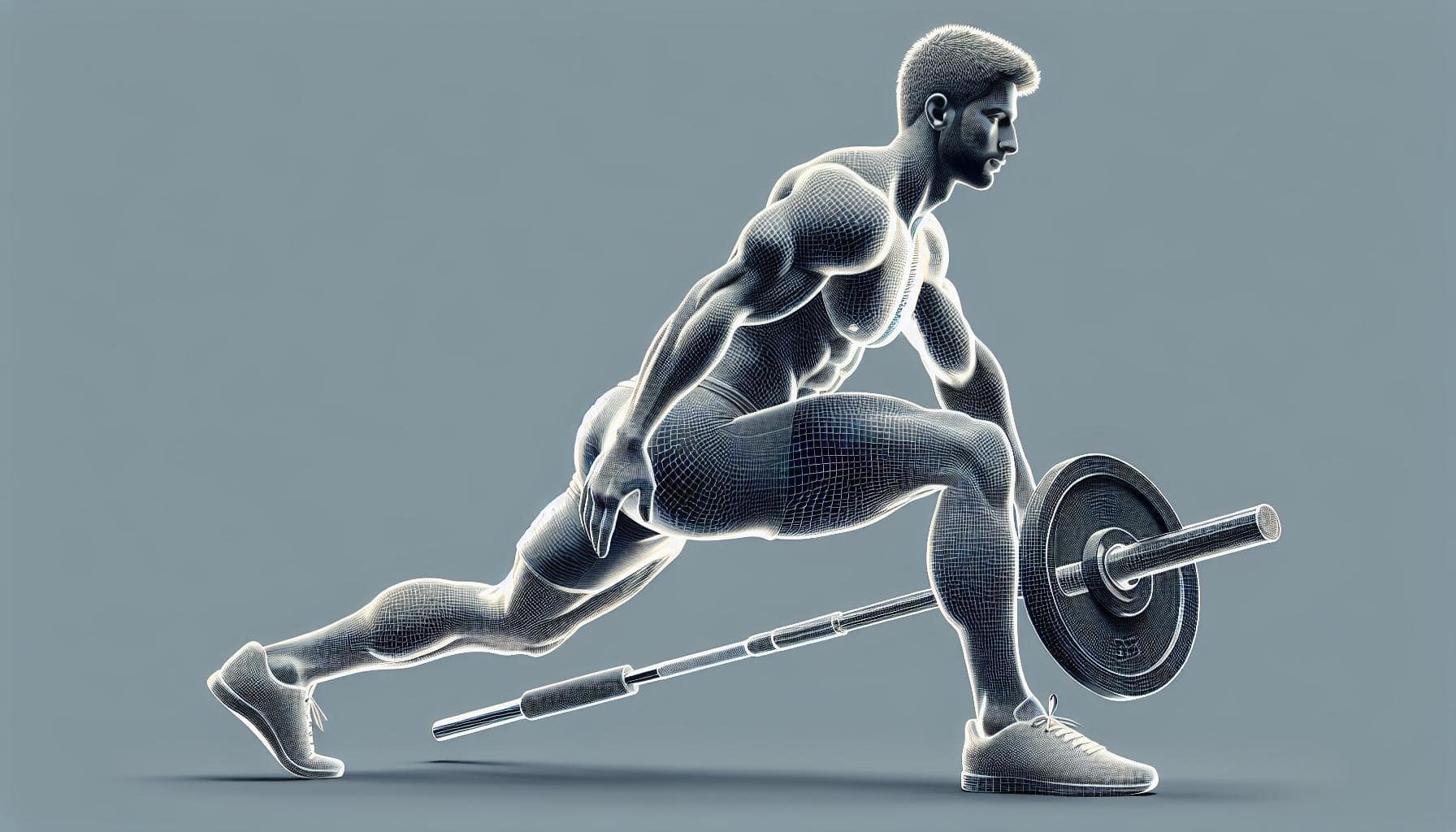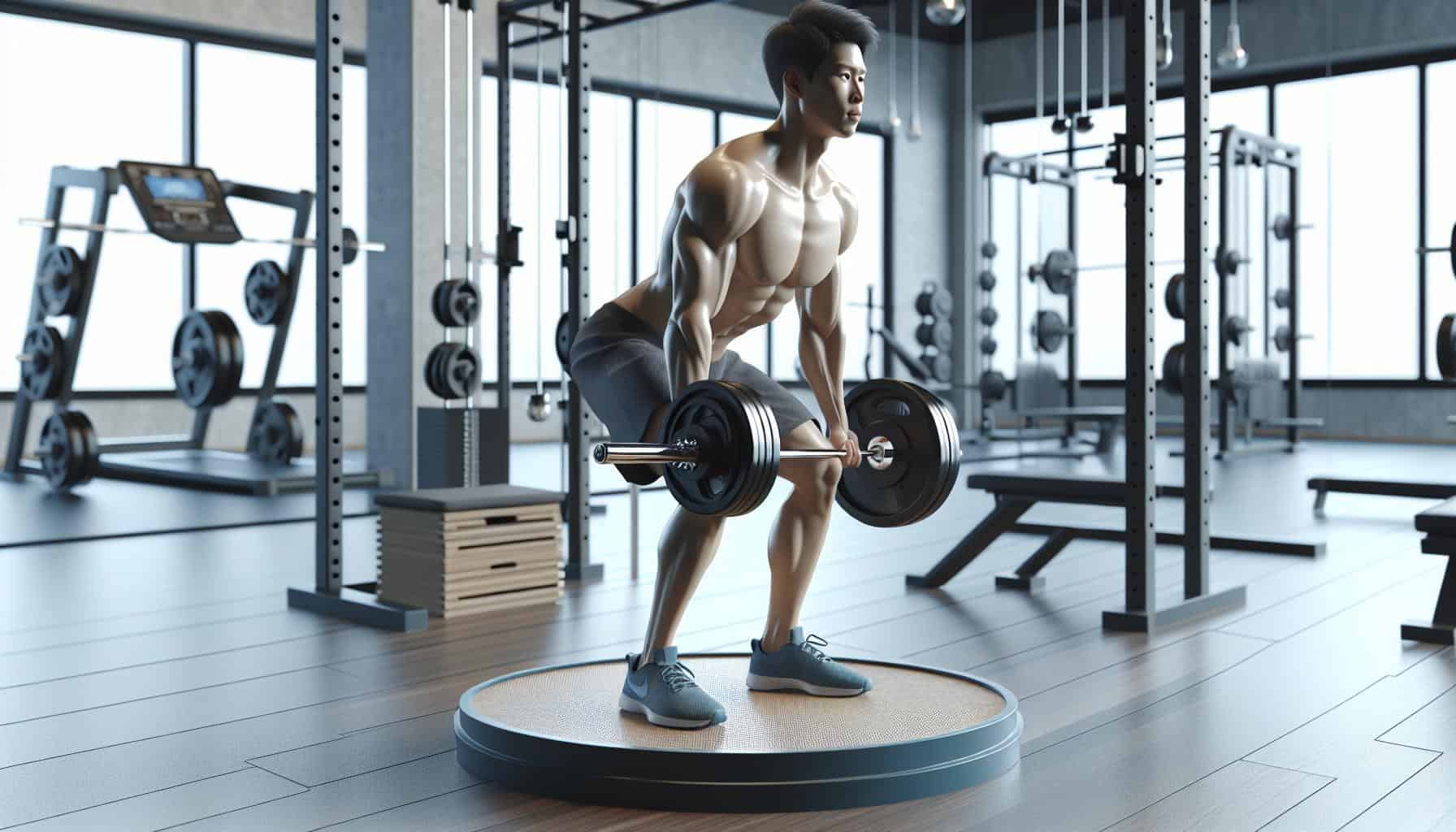Top Hamstring Workout Moves for Strong, Agile Legs
Ready to revamp your leg day routine? It’s time to zero in on your hamstrings—the unsung heroes of lower-body strength and stability. Often overshadowed by their showier counterparts, these powerful muscles at the back of your legs are the key to a balanced, injury-resistant physique.
You might think hamstring curls are the be-all and end-all for hamstring strength, but there’s much more to these muscles than meets the eye. They’re not just for bending your knees; they play a pivotal role in knee extension and deceleration, essential for everyday movements and athletic performance alike.
Dive into a hamstring workout that’s about to change your whole approach to leg day. Say goodbye to the same old curls and hello to a routine that builds serious strength and helps prevent injuries, keeping you on your feet and ready for action.
The Importance of Hamstring Strength
When you’re ramping up your fitness game, whether hitting the weights or lacing up for sprints, the power of strong hamstrings can’t be understated. Beyond the aesthetic appeal of well-defined legs, there’s a functional fortress to be built in the back of your thighs. Hamstring workouts are your ticket to unlocking this potential.
First off, hamstring strength is a linchpin in your performance across a broad spectrum of activities. These muscles, lying at the back of your thigh, are pivotal for movements that involve knee extension and hip flexion. Improved hamstring strength not only boosts your prowess in sports but also enhances mobility and balance, two cornerstones of daily activity.
Another reason to prioritize hamstring workouts is their direct impact on other exercises. Weak hamstrings often mean leaving gains on the table when performing compound lifts like squats and deadlifts. By fortifying these muscles, you’re set to unlock new levels of prowess under the bar. Also, considering that the hamstrings action is not merely to bend the knee but to extend it, especially during upright activities, reinforces their value in functional athletic performance.
Furthermore, hamstring exercises contribute significantly to injury prevention. Robust hamstrings are your best defense against strains, particularly those resulting from eccentric loading, where the muscle lengthens while under tension. Regular hamstring workouts can dramatically reduce your risk of injury and keep you off the sidelines.
In your journey to hamstring heaven, remember that it’s not just about curls. Embrace a variety of exercises that challenge your muscles from different angles. Stiff-legged deadlifts and Romanian deadlifts are prime examples that effectively engage both your hamstrings and glutes, depending on the knee angle during the exercise.
Growing your hamstring muscles through dedicated workouts will do more than just aid in performance; it’ll sculpt your lower body into a head-turning powerhouse. So, as you plan your leg day routine, make sure hamstring exercises aren’t just an afterthought but a central focus of your strategy.
Common Misconceptions about Hamstring Workouts
 When you’re aiming to strengthen your hamstrings, you’ll likely encounter myriad pieces of advice, but not all of it’s accurate. A common belief is that you need to work out your hamstrings every day to see results. On the contrary, overtraining can lead to fatigue and increased injury risk. Hitting your hamstrings one or two times per week is sufficient to make significant gains without overburdening them.
When you’re aiming to strengthen your hamstrings, you’ll likely encounter myriad pieces of advice, but not all of it’s accurate. A common belief is that you need to work out your hamstrings every day to see results. On the contrary, overtraining can lead to fatigue and increased injury risk. Hitting your hamstrings one or two times per week is sufficient to make significant gains without overburdening them.
Another misconception is the notion that you should always feel pain for a workout to be effective, especially with hamstring exercises. However, discomfort and pain aren’t indicators of productivity. It’s vital to listen to your body and understand the difference between a good burn and harmful pain. Sharp or persistent pain is a red flag signaling that you might be pushing too hard or using incorrect form.
Many beginners overlook the importance of the hamstrings, focusing instead on the more visible muscles at the front of the body. Nevertheless, hamstring workouts shouldn’t be an afterthought. They play a crucial role in balance and everyday movements, so neglecting them can result in muscle imbalances and affect your overall fitness.
A further misconception is the idea that advanced equipment is necessary for an effective hamstring workout. In reality, bodyweight exercises or simple tools like a bench can target your hamstrings adequately. For instance, Bulgarian split squats are an excellent example of an exercise that uses minimal equipment but provides maximum benefit.
People often assume hamstring exercises are only beneficial for athletes or regular gym-goers. This isn’t the case—everyone can benefit from hamstring strengthening, as it aids in injury prevention and improves the performance of common tasks such as walking and running.
Remember, you’re in it for the long haul. Choose exercises that match your fitness level and gradually increase intensity as your hamstrings grow stronger. There’s no rush; it’s about consistent, safe progress. Make sure to include a variety of exercises like stiff-legged deadlifts, glute bridges, and kettlebell swings to effectively engage and develop your hamstrings.
Understanding the Function of the Hamstrings
Your hamstrings are more than just a muscle group; they’re the powerhouse that supports a plethora of activities. Comprising three primary muscles — the semimembranosus, semitendinosus, and biceps femoris — your hamstrings engage when you perform movements that require hip extension or knee flexion. Recognizing the dual functionality of these muscles is fundamental to crafting an effective hamstring workout.
Each hamstring muscle crosses two pivotal joints: the hips and the knees. This unique anatomical setup allows the hamstrings to assist in both extending the hip and bending the knee. During hip extension, your hamstrings collaborate with the glute muscles, playing a pivotal role when you rise from a seated position. Conversely, during knee flexion, they enable you to pull your heel up towards your buttocks. Considering this synergy, it’s clear why a well-rounded hamstring workout is vital for robust leg function.
In real-life scenarios, the importance of hamstrings can’t be overstated. Whether you’re walking your dog or going for an all-out sprint, you’re relying on these key muscles for stabilization and power. Think of them as the engine behind your legs’ forceful movements. It’s this very attribute that makes your hamstrings indispensable in sports that demand explosive actions, such as track and field events or basketball.
While structuring your hamstring workout, keep in mind the muscle’s ability to generate force when it’s both lengthened and shortened. Exercises like good mornings tap into the lengthened state, fostering strength throughout the muscle’s range of motion. On the flip side, movements such as bridges and hip thrusts challenge the hamstrings in a shortened state, boosting your ability to harness power from this potent muscle group.
Always remember to prime your hamstrings with stretches before leaping into your workout routine. A well-prepared muscle is less prone to injury and more receptive to growth and strengthening. So when planning your next hamstring workout, consider the mechanics and functionality of these muscles to not only optimize performance but to prevent the all-too-common hamstring strains that can sideline you from your favorite activities.
Targeted Exercises for Hamstring Development
Incorporating targeted exercises into your hamstring workout can effectively boost both strength and flexibility. Unilateral leg exercises, such as the Bulgarian Split Squat, don’t just challenge your balance; they also emphasize hamstring development. This exercise requires a sturdy bench or platform to place one foot on while the other performs the squat. Ensure your torso stays upright and your movements controlled to maximize the exercise’s benefits.
Prone Leg Curls, also known as lying leg curls, are a gold standard when it comes to isolating your hamstrings. The resistance provided by the machine allows for intense muscle contractions, focusing on the hamstrings without much assistance from other muscle groups.
Exercise Name | Key Benefit |
|---|---|
Bulgarian Split Squat | Targets hamstrings unilaterally |
Prone Leg Curls | Isolates the hamstrings |
Don’t overlook the quintessential Squats in your hamstring workout. While squats are renowned for their comprehensive lower body benefits, they’re particularly effective for engaging the hamstrings as well as the glutes and quads. To make sure your hamstrings are activated throughout the motion, concentrate on the eccentric phase, or the lowering of the squat, and maintain tension as you push back up.
Remember to incorporate variations in your squats by using different forms of resistance like dumbbells, kettlebells, or barbells. This not only adds intensity but also engages stabilizing muscles, fostering greater balance and coordination.
Here’s a quick guide for performing squats with an emphasis on hamstring engagement:
- Stand with feet slightly wider than shoulder-width.
- Hold weights by your sides or at chest level.
- Keep your core engaged and back straight.
- Lower into a squat, maintaining weight in your heels.
- Push up from your heels, squeezing your hamstrings to return to starting position.
- Aim for 12 to 15 reps per set.
Mixing these exercises into your routine ensures that your hamstrings receive a well-rounded challenge, critical for building strength and preventing injury. Adjust the weights and reps according to your fitness level and ensure proper form to get the most out of every exercise.
Creating a Balanced Leg Day Routine
 When you’re building your leg day workout, it’s vital to ensure you’re not just focusing on the quads; hamstrings play a vital role in your lower body strength and aesthetics. Hamstring workouts are beneficial for achieving a balanced, powerful leg profile.
When you’re building your leg day workout, it’s vital to ensure you’re not just focusing on the quads; hamstrings play a vital role in your lower body strength and aesthetics. Hamstring workouts are beneficial for achieving a balanced, powerful leg profile.
To start, consider the single-leg Romanian deadlift. It’s an excellent exercise for targeting hamstrings and improving balance and coordination. Here’s how you do it:
- Stand with feet hip-width apart.
- Shift weight to one foot and hinge at the hips.
- Lift the opposite leg back, keeping your spine neutral.
- Lift your torso back to the starting position.
Perform 2-3 sets of 8-12 reps per leg.
Reverse lunges are a complementary exercise, honing in on stability and hamstring engagement. When done correctly, they also engage the glutes and help in building unilateral leg strength.
- Start in a standing position with feet hip-width apart.
- Step back with one leg and lower into a lunge.
- Keep your front thigh parallel to the floor.
- Return to the starting position to complete the rep.
Do 2-3 sets of 8-12 reps for each leg.
Integrate exercises like the Dumbbell Good Morning and Stability Ball Leg Curls to add variety. Focus on maintaining a tight eccentric phase and an explosive concentric phase. This kind of muscular control is key for maximizing your hamstring development. Here’s a quick set rep scheme to consider:
Exercise | Sets | Reps |
|---|---|---|
Romanian Deadlift | 3 | 6-8 |
Dumbbell Good Morning | 3 | 8 |
Lying Leg Curl | 3 | 10 |
Single-Leg Stability Ball Curl | 3 | 12 per side |
Remember to keep a controlled movement, especially on the eccentric part of these exercises to optimize hamstring growth. Additionally, allowing for a rapid change in direction at the end of your range of motion will force your hamstrings to adapt and strengthen.
Conclusion
You’ve got the tools to build strong, resilient hamstrings that’ll not only enhance your performance but also protect you from injury. Remember, incorporating exercises like Bulgarian Split Squats and Prone Leg Curls into your routine will pay off with improved strength and stability. Stay focused on maintaining muscular control, and don’t be afraid to mix things up with Dumbbell Good Mornings or Stability Ball Leg Curls for a challenging twist. Give your hamstrings the attention they deserve, and they’ll reward you with the power to pivot and accelerate like never before. Stick with it, and you’ll feel—and see—the difference.
Frequently Asked Questions
Is it OK to stretch hamstrings every day?
Yes, daily stretching of the hamstrings is beneficial, especially after periods of inactivity like sleeping or prolonged sitting. Consistent stretching can enhance flexibility, posture, and neck health as you age.
How long does it take to strengthen your hamstrings?
Strengthening the hamstrings can take 6-8 weeks with focused training, involving exercises targeting them more than once a week. However, it’s crucial not to repeat the same workout within this period to prevent overuse injuries.
What daily activities use hamstrings?
Hamstrings are actively engaged in daily activities such as walking, climbing stairs, and squatting. They play a vital role in many movements involving the legs.
How can I strengthen my glutes and hamstrings at home?
To strengthen glutes and hamstrings at home, perform exercises such as:
- Pause Squats: 10 reps with a two-second pause at the bottom.
- Romanian Deadlifts: 8 reps focusing on hip movement.
- Hip Thrusts: 10 reps to activate the glutes.
- Bulgarian Split Squats: 20 reps to target the hamstrings.
- Step Ups: 20 reps to engage the entire leg.
Is 2 exercises enough for hamstrings?
For balanced hamstring training, include at least one exercise focused on hip movement (like Romanian deadlifts) and one focused on knee movement (like leg curls or glute-ham raises). Two exercises can suffice if they target different aspects of hamstring function.

